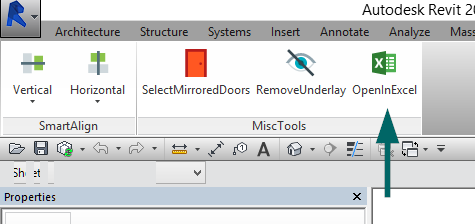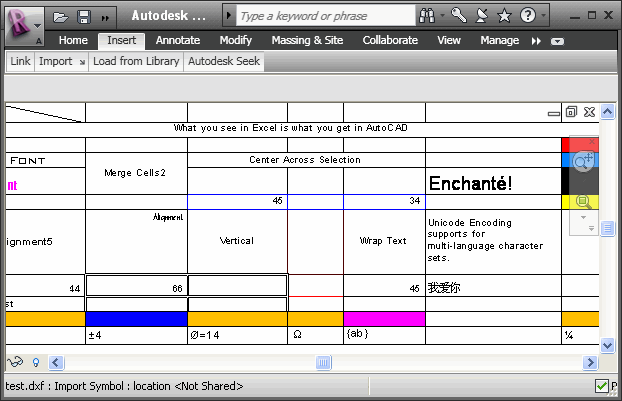Revit Tools for every single Task: Your Ultimate Style Friend
Wiki Article
Excel-to-Revit: A Game-Changing Workflow for Architectural Design - Introducing the Tricks
Are you tired of costs hours on architectural layout? Look no more! Presenting excel-to-revit, the game-changing operations that will revolutionize your design procedure. With excel-to-revit assimilation, you can enhance your architectural style, unlock performance, and maximize collaboration within your group. In this short article, we will certainly reveal the keys of this effective tool, revealing you how it can transform your layout projects. Prepare yourself to take your building design to the next degree with excel-to-revit!The Power of Excel-to-Revit Assimilation

Picture the convenience of having the ability to modify and upgrade project information in Excel, and quickly see those modifications shown in your Revit model. No much more manual information access or laborious updates. With Excel-to-Revit combination, you can save time and lower mistakes by leveraging the power of Excel's functions and formulas to immediately produce precise data in Revit.
Not just does this assimilation boost performance, however it likewise improves partnership amongst group members. You can quickly share Excel data with associates, who can after that import the data into their Revit versions. This advertises a seamless exchange of info and makes certain that everyone is working with the most updated information.

Enhancing Architectural Style With Excel-To-Revit
Enhancing building layout is simplified with making use of Excel-to-Revit (revit add ins). With this powerful combination, you can optimize your workflow and save important time throughout the style process. By leveraging the capabilities of Excel and Revit, you can flawlessly move information in between the 2 platforms, removing the requirement for manual information entrance and minimizing the risk of errorsExcel-to-Revit allows you to import and export information effortlessly, enabling you to easily upgrade and modify your architectural styles. You can create schedules, determine amounts, and produce reports in Excel, and afterwards move that information directly right into your Revit version. This integration guarantees that your style info is constantly updated and integrated, eliminating the demand for manual updates and lowering the chances of incongruities.
By using Excel-to-Revit, you can likewise capitalize on the powerful computational capabilities of Excel. You can do complex computations, evaluate data, and automate repeated jobs, all within Excel. With just a couple of clicks, you can import the results back right into Revit, enabling you to make educated layout decisions and optimize your architectural designs.
Unlocking Efficiency: Checking Out the Excel-to-Revit Workflow
Optimize your productivity by seamlessly incorporating Excel and Revit for a much more efficient workflow. With the Excel-to-Revit workflow, you can open a whole new degree of efficiency in your architectural layout procedure. By using the power of Excel's information administration capacities and incorporating it with the adaptability and precision of Revit, you can improve your layout process and conserve valuable time.Among the key advantages of this combination is the capability to import and export information in between Excel and Revit. This means that you can easily move project information, such click to find out more as space schedules or material quantities, from one software application to the other, eliminating the need for manual information entry and reducing the possibilities of errors. You can additionally create customized formulas and computations in Excel to automate recurring tasks and execute intricate estimations, which can after that be flawlessly incorporated into your Revit designs.
In Addition, the Excel-to-Revit operations permits much better coordination and cooperation between staff member. With Excel acting as a main information hub, several employee can function on various facets of the job at the same time, updating and sharing info in real-time. This not just boosts communication but also guarantees that everybody is collaborating with one of the most up-to-date data, removing the risk of inconsistencies.
Maximizing Cooperation: Excel-to-Revit for Architectural Teams
By effortlessly incorporating Excel and Revit, architectural teams can greatly improve cooperation and achieve extra efficient style results. When utilizing this powerful workflow, you can quickly transfer data in between Excel spread sheets and Revit models, simplifying the style procedure and improving communication amongst team members.Additionally, by leveraging Excel's effective estimation abilities, you can do complicated estimations and evaluation on your layout data, giving beneficial insights and driving educated decision-making. This integration additionally allows you to export data from Revit to Excel, enabling you to develop thorough reports, charts, and charts for discussions and analysis. This collaborative process promotes efficient communication and sychronisation amongst staff member, as Excel Check This Out acts as a central hub for data monitoring and sharing.
Overall, by welcoming the Excel-to-Revit workflow, building teams can attain higher levels of partnership, efficiency, and precision in their style procedure. revit plugins. This integration empowers groups to interact effortlessly, ensuring that every person gets on the exact same web page and adding to the success of the job
Introducing the Secrets of Excel-to-Revit Assimilation

Among the keys of Excel-to-Revit integration is the ability to leverage the power of solutions and estimations in Excel to drive criteria and produce facility geometries in Revit. You can link Excel spread sheets to Revit family members, allowing you to input information straight right into the spreadsheet and have it automatically update in the Revit model. This simplifies the design process and guarantees precision and uniformity across the project.
One more key is the capability to produce custom timetables and records in Excel, utilizing data extracted from Revit. This enables you to assess over at this website and envision task details in a way that is not possible within Revit alone. You can quickly create quantity liftoffs, cost estimates, and project timelines, offering beneficial understandings for decision-making and job monitoring.
On top of that, Excel-to-Revit integration allows reliable collaboration amongst staff member. Multiple individuals can deal with the exact same Excel spreadsheet all at once, making it less complicated to work with and track adjustments. You can additionally make use of Excel's commenting feature to offer comments or connect design revisions.
Verdict
So there you have it, the keys of excel-to-revit combination have been revealed. This game-changing operations has the power to simplify building layout, unlock effectiveness, and take full advantage of partnership for building groups. By combining the power of Excel and Revit, designers can currently work a lot more effectively, save time, and generate better styles. So why wait? Start integrating excel-to-revit combination into your architectural design process today and transform the method you function.With just a couple of clicks, you can import the outcomes back into Revit, enabling you to make enlightened design choices and maximize your architectural layouts.
By utilizing the power of Excel's information management capacities and integrating it with the adaptability and accuracy of Revit, you can enhance your style process and conserve valuable time.
By flawlessly integrating Excel and Revit, building teams can greatly boost partnership and achieve more efficient style results. When utilizing this powerful process, you can easily transfer data in between Excel spread sheets and Revit models, enhancing the layout procedure and enhancing communication among group participants.Moreover, by leveraging Excel's powerful estimation abilities, you can execute intricate estimations and evaluation on your style information, supplying important understandings and driving informed decision-making.
Report this wiki page